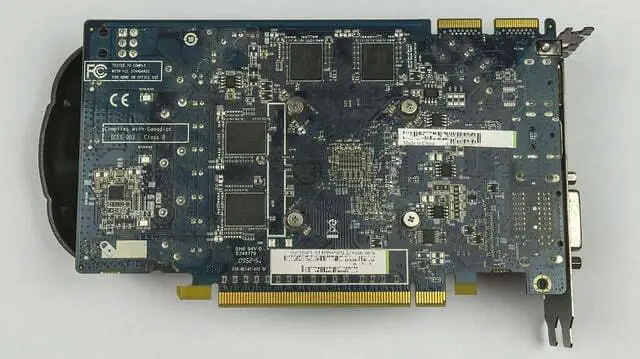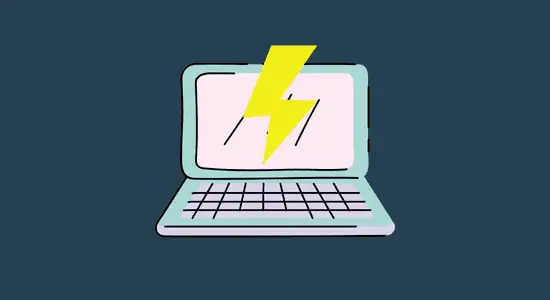Table of Contents Show
When you uninstall GPU drivers, it can be a little more complicated than uninstalling other software. It is because graphics processing units (GPU) drivers are important for ensuring that your system can use your graphics card to its full potential.
If you are using an AMD, NVIDIA, or other graphics card, there are a few ways to uninstall GPU drivers from your computer, which you no longer need, which we will cover in this guide.
Through Device Manager
The Device Manager is a Windows utility that allows you to view and manage the devices installed on your computer. You can uninstall devices, update, and troubleshoot problems. If you are experiencing problems with your graphics card, one of the best ways to delete it is through the Device Manager.
To do this:
1. Open the Device Manager by pressing the Windows key and typing “Device Manager.”
2. Expand the “Display adapters” category.
3. Right-click on your graphics card and select “Uninstall Device.”
4. Click “OK” to confirm.
5. The drivers will be uninstalled, and your computer will restart automatically.

Note: Before uninstalling a device, make sure you have downloaded the latest version on your pc.
Uninstall GPU Drivers Through Control Panel
There are many ways to uninstall software, but the Control Panel is still the most common. A control panel is a handy tool that lets you manage your computer’s settings. If you have difficulties with your graphics card or want to update it, you may need to uninstall the old version. The process can be tricky, but we will show you how to do it correctly.
To do this:
1. Open the control panel by clicking on the Start menu and selecting Control Panel.
2. In the Control Panel window, click on Programs and Features.

3. In the Programs and Features window, scroll down to find the graphic card drivers you want to uninstall and right-click on it. Click on the “Uninstall” button.

4. You will be asked if you want to remove all of the files associated with the driver, so click on “Yes” and follow the instructions: the Path Control Panel\All Control Panel Items\Programs and Features.
5. The process may take a few minutes, so be patient.
6. Once it is finished, reboot your computer.
Uninstall GPU Drivers Using Third-Party Applications
Let’s look at how to uninstall GPU drivers using a third-party utility. When you uninstall a program, it’s usually not enough to delete the program files from your computer. You also need to delete any registry keys and values that the program created, and sometimes you need to delete leftover files and folders from the hard drive.
You can use a third-party uninstaller tool if you’re unsure how to do all this yourself. These tools are designed to help you completely remove programs from your computer, including all their associated files and registry entries.
Many different third-party uninstaller tools are available, so you should choose one that fits your needs. All these tools are free to download and use, but they vary in features and ease of use. Some offer a trial version that you can use for testing purposes.
Uninstall from the installation folder
When you install a program, it is usually installed in the Program Files folder on your computer. You may sometimes want to remove the program from this location rather than using the Programs and Features control panel. You can do it by deleting the program’s files from the installation folder or using the uninstaller file. This program is usually located in the driver’s installation folder. Open up the folder and look for an executable file called “uninstall.” Run this File to start the uninstall process.
To delete a program’s files from the installation folder, open File Explorer and go to C:\Program Files (or C:\Program Files (x86) if you use a 64-bit version of Windows). Locate the graphics card driver program folder and delete it. If the program has any sub-folders, delete them as well.

Be careful when deleting files from the installation folder, as doing so can remove the program. Make sure you are deleting the correct files before continuing. Uninstalling GPU drivers from the installation folder is also one of the quick ways to delete the program from your computer.
Uninstalling GPU Drivers FAQs
What Is A GPU Driver?
A GPU driver is a program that allows your computer to communicate with your graphics card. Without the driver, your graphics card would be useless. GPU drivers are typically included with your operating System. Still, they may also be available as a separate download from your graphics card manufacturer, especially if you are using a high-end graphics card.
Should You Uninstall GPU Drivers Before Installing New Card?
You might wonder if you need to uninstall your old graphics card drivers before installing a new one. The answer is it depends. If your old graphics card is still installed and functioning properly on your computer, then you don’t need to uninstall the drivers.
However, if you have already uninstalled your old graphics card and are ready to install the new one, you should uninstall the old drivers before proceeding. Because new graphics cards often require updated drivers to function properly.
If you install the new card with the old drivers still installed, you may experience problems such as crashing or low performance.
Can you reinstall an uninstalled driver?
Are you having trouble with a driver that you recently uninstalled? If you think the problem might be with the driver, there is a way to try and fix it. You can reinstall an uninstalled driver on Windows. This process is fairly simple and could help you get your computer working properly again.
If your GPU does not need special drivers from the manufacturer, then windows can help reinstall or roll it back. You can do this by opening the device manager and locating your graphics card, then right-click> Property > Driver tab > Click on Rollback Driver and follow screen instructions to complete the process. Visit the manufacturer’s official website to download if this does not work.
Does System Restore also recover uninstalled GPU drivers?
System Restore is a Windows feature that allows you to restore your computer to a previous state. This can be useful if you experience problems with your computer, as it might allow you to fix them by reversing the changes that caused the problems. You can also use System Restore to restore your computer to its default settings.
One of the features of System Restore is that it can restore your computer’s deleted GPU drivers and other devices. This can be helpful if you are having difficulties, as it might allow you to fix them by reversing the changes that caused them. However, it is important to note that System Restore might not always be able to recover your drivers.
How do I fix a corrupted graphics driver?
If your graphics driver is corrupted, you may experience problems such as distorted or scrambled graphics, crashes, or no video output. You can do several things to try to fix a corrupted graphics driver.
The first thing to try is to uninstall and then reinstall the driver. You can uninstall it from the Device Manager window. To reinstall, download it from the manufacturer’s website and install it manually.
If uninstalling and reinstalling the driver doesn’t fix the issue, you can try rolling back to an earlier version. You can do it from the Device Manager window. However, note that this may not work if no earlier version of the driver is available.
What should I do after installing the new GPU?
Congratulations on your new graphics card! After installing it, be sure to update the software. You can find the latest drivers on the manufacturer’s website. If you’re running Windows, open the Control Panel and go to Device Manager. Expand Display adapters and right-click on your new graphics card. Click Update Driver Software.
Windows will automatically search for the latest drivers online. If you can’t find them, you’ll need to download them from the manufacturer’s website and install them manually.
Conclusion
To uninstall GPU drivers is a relatively simple process. Just be sure to back up your data before you begin, just in case something goes wrong. And, as always, if you are unsure how to complete any of these steps, consult a professional.












